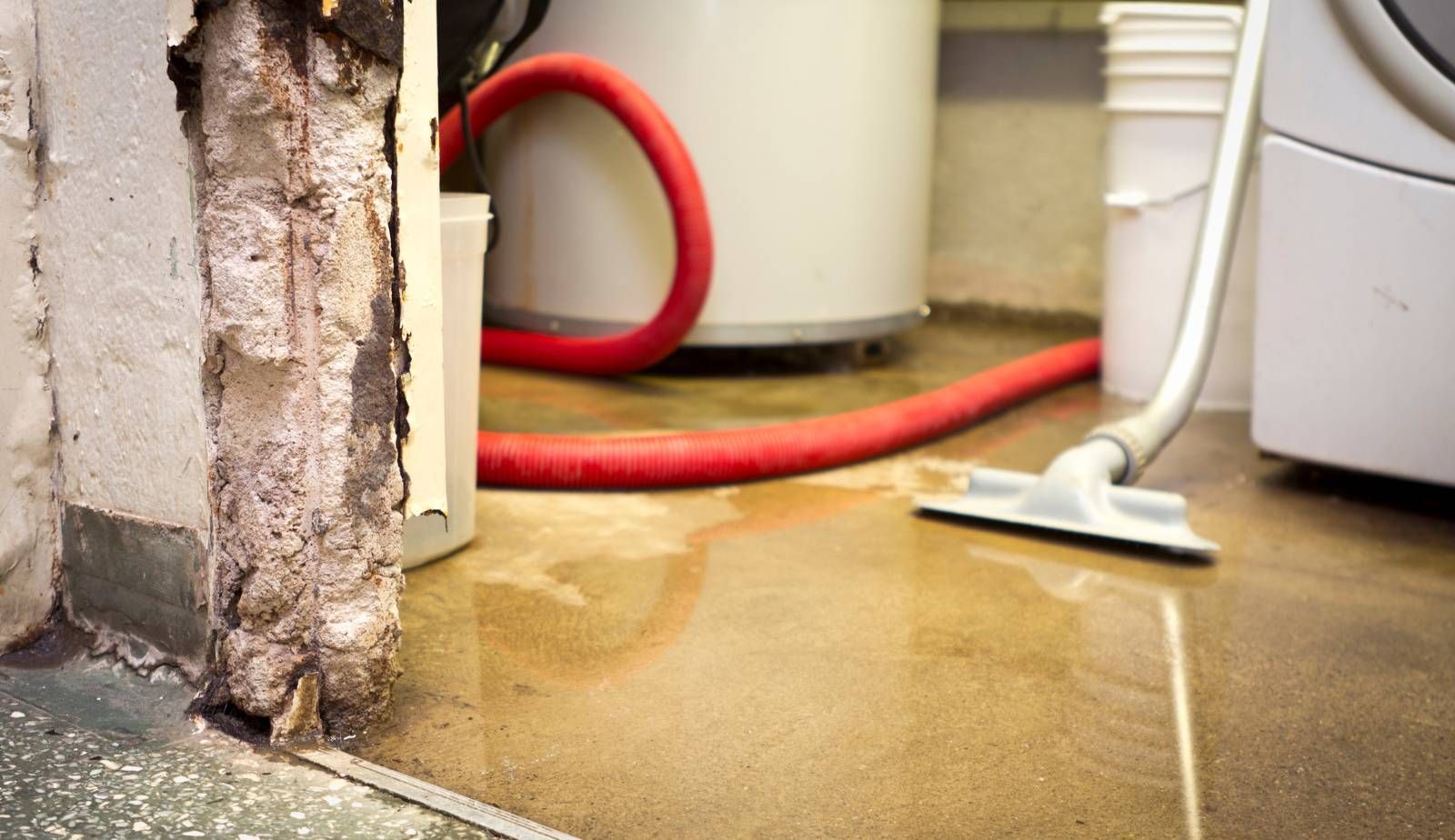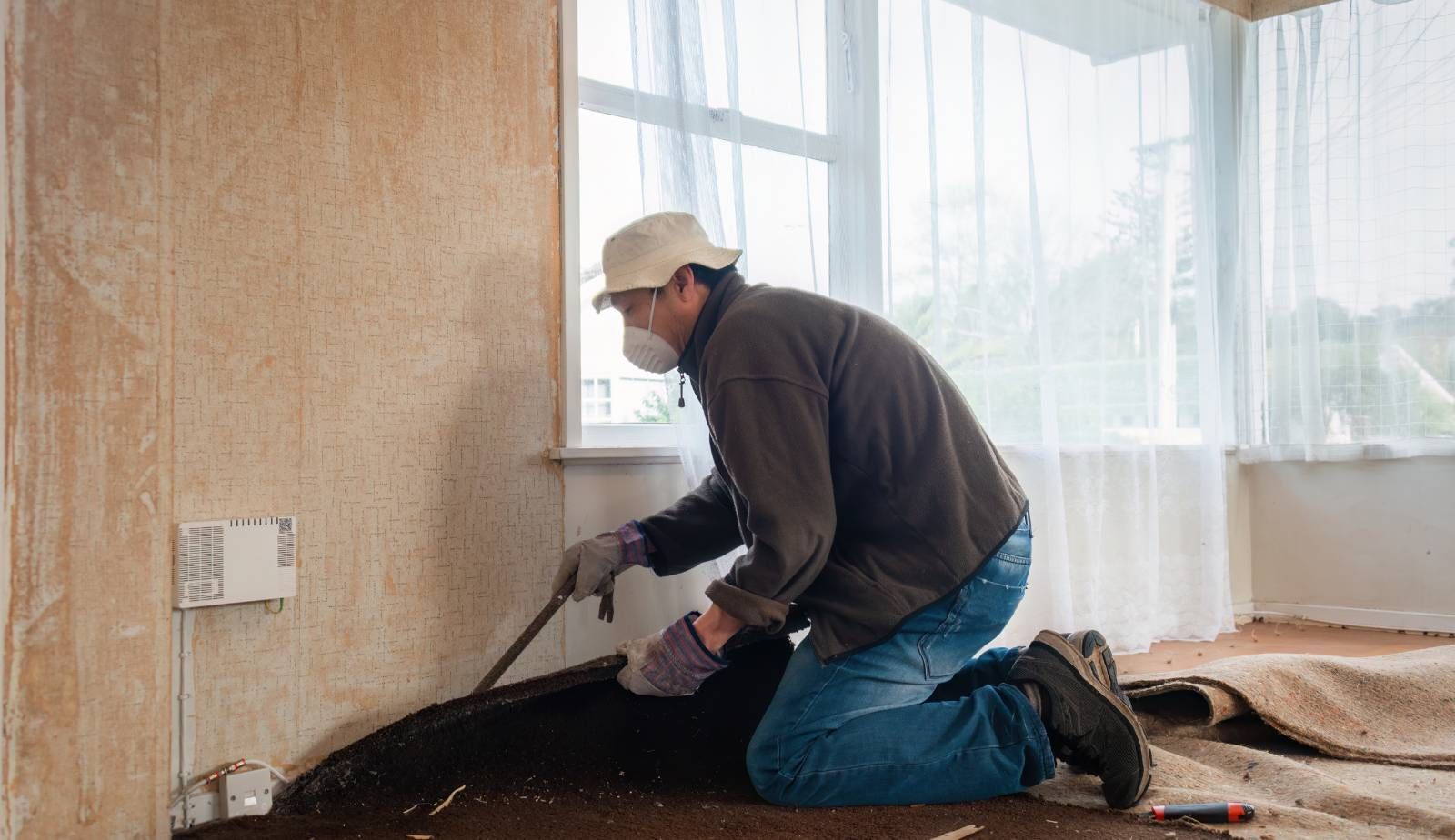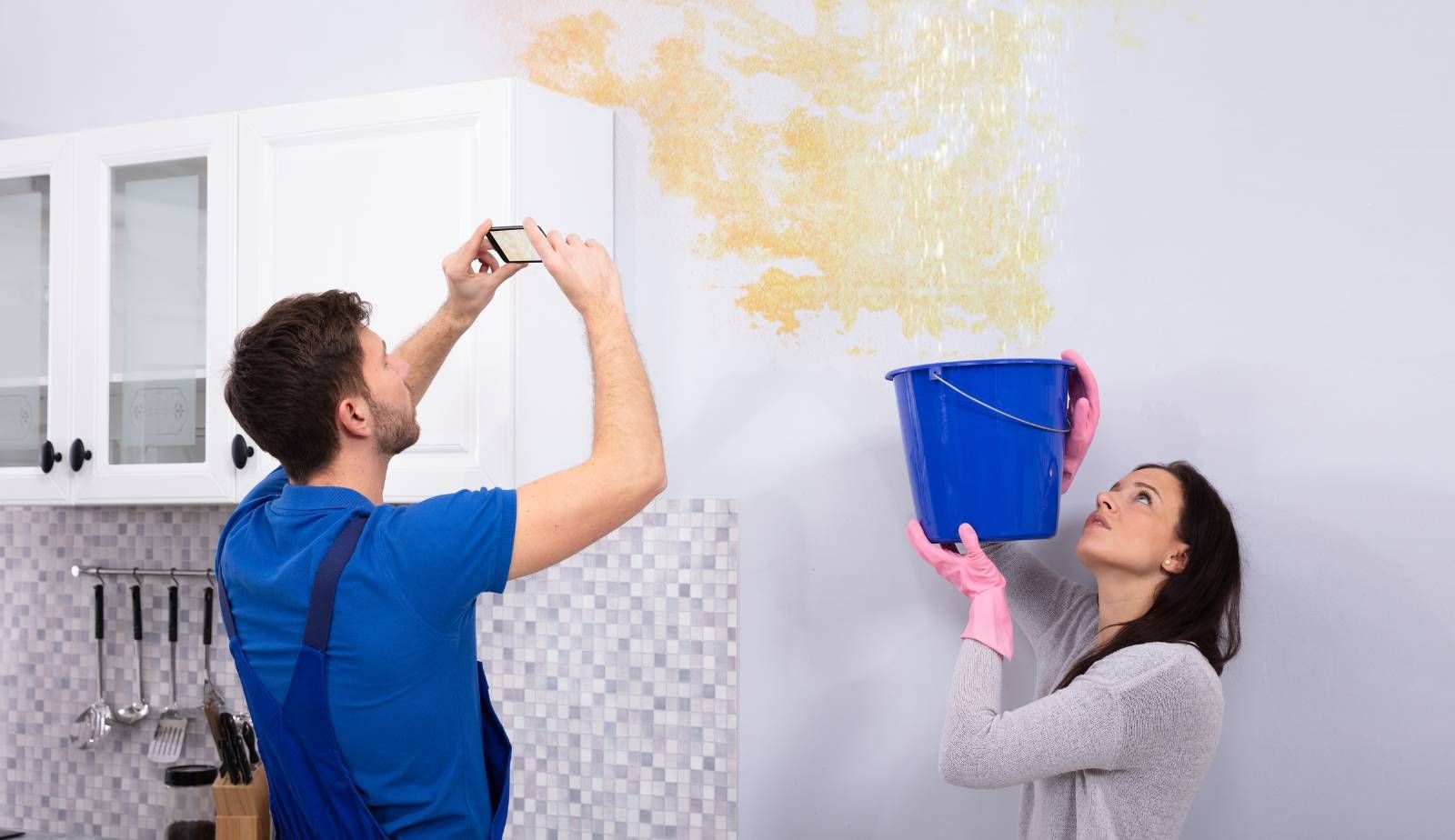DIY Water Damage Cleanup: Dos and Don’ts for Homeowners Handling Minor Repairs
Experiencing water damage in a home can be a stressful situation for any homeowner. Understanding the dos and don’ts of DIY water damage cleanup can empower individuals to tackle minor issues efficiently and safely. Taking the right steps not only minimizes the risk of further damage but also fosters a healthier living environment.
Homeowners should ensure they have the appropriate tools, such as wet vacuums, fans, and disinfectants, to handle minor water damage effectively. Safety precautions are essential, including wearing protective gear and ensuring electrical sources are secure before starting cleanup. Recognizing when a problem exceeds DIY capabilities is crucial; knowing when to call in professionals can prevent hazardous situations and expensive repairs.
By following targeted guidelines, homeowners can gain the confidence needed to address minor water damage on their own, making the process smoother and less intimidating. Understanding these principles can lead to successful cleanup and restoration.
Understanding Water Damage
Water damage can arise from various sources and poses serious risks to properties and occupants. It is essential for homeowners to understand the types, potential health hazards, and structural concerns to effectively manage these situations.
Types of Water Damage
Water damage is categorized into three primary types: clean water, gray water, and black water.
- Clean Water: This originates from a clean source, such as a burst pipe or rainwater. Although it can still cause damage, it does not pose significant health risks.
- Gray Water: This includes water from sinks, showers, or washing machines. It contains some contaminants that can lead to illness if ingested.
- Black Water: This type is heavily contaminated, often from sewage or flooding. It can harbor harmful bacteria and pathogens, making it dangerous for human health.
Understanding these categories helps homeowners determine appropriate cleanup strategies and whether professional assistance is necessary.
Potential Health Hazards
Exposure to water damage can lead to several health risks.
- Mold Growth: Moisture creates a breeding ground for mold and mildew. These can trigger respiratory issues, allergies, and other health complications.
- Bacterial Infections: Particularly with gray and black water, bacteria can proliferate, leading to infections if individuals come into contact with contaminated surfaces.
- Electrocution Risks: Standing water in the vicinity of electrical outlets or appliances represents a serious electrocution hazard. It is vital to address electrical safety immediately.
Homeowners should remain vigilant about these hazards, recognizing that the potential for illness increases with the severity of the water issue.
Identifying Structural Damage
Water can weaken a structure's integrity over time. Homeowners should be aware of key indicators of structural damage, including:
- Sagging Ceilings or Floors: Water can cause sagging or warping, which often indicates compromised structural elements.
- Staining: Discoloration on walls or ceilings is a visual sign that moisture has infiltrated these areas. Dark spots may precede more severe damage.
- Odors: Persistent musty smells often suggest mold or rotting wood, indicating potential structural concerns that need attention.
Timely identification of these issues can prevent further damage and costly repairs. Regular inspections are essential for maintaining a healthy home environment.
Safety Precautions Before Cleanup
Before beginning any cleanup process after minor water damage, it is crucial to prioritize safety. Proper precautions can help prevent injuries and protect individuals from harmful contaminants.
Personal Protective Equipment (PPE)
The first step in ensuring safety is to wear appropriate personal protective equipment (PPE). This includes:
- Rubber gloves to protect hands from contaminants and cuts.
- Waterproof boots to keep feet dry and provide traction.
- Safety glasses to shield eyes from debris or splashes.
Additionally, a face mask or respirator may be necessary when dealing with potentially moldy or contaminated materials. Wearing these protective gears minimizes the risk of skin exposure and respiratory issues. Anyone performing cleanup should ensure that their PPE fits properly and is suitable for the tasks at hand.
Electrical and Contamination Risks
Water and electricity can be a dangerous combination. Before starting cleanup, it is vital to turn off power at the circuit breaker to avoid electrical shock.
In cases where the water is potentially contaminated, such as floodwater, it's critical to assess the situation cautiously. Contaminated water can harbor bacteria and other harmful pathogens. Individuals should avoid contact with this water whenever possible.
Proper procedures for disposing of contaminated materials should be followed to ensure safety. Additionally, always work in a well-ventilated area to reduce exposure to mold spores and other airborne contaminants. By taking these precautions, the risk of injury or illness during cleanup can be significantly reduced.

Initial Water Damage Assessment
Assessing water damage promptly is crucial for effective DIY cleanup. Homeowners must determine the source of the water and understand the water category to take appropriate measures and avoid further complications.
Determining the Source
Identifying the source of the water is the first step in the assessment process. Common sources include appliance malfunctions, such as dishwashers or washing machines, which can lead to flooding. Homeowners should check for leaks from plumbing fixtures, water heaters, or even a leaky roof that may allow precipitation to enter the home.
Next, evaluate any signs of flooding from natural disasters like heavy rains or storms. Noting these details helps in understanding how to approach the cleanup effectively. Immediate action is necessary if the source can be controlled, such as turning off the water supply.
Assessing Water Category and Extent
The water category plays a significant role in cleanup procedures. Water is typically classified as clean, gray, or black. Clean water, from sources like a burst pipe, is less hazardous.
Gray water includes water from appliances, which may contain contaminants, while black water involves sewage backup or floodwater that poses serious health risks. Assess the extent of damage by checking affected areas. Measure the depth of standing water and identify porous materials that may need replacement. The level of contamination dictates the cleanup strategy and safety precautions needed, determining whether professionals are required.
Tools and Equipment for Water Damage Cleanup
When dealing with water damage, the right tools and equipment are crucial for effective cleanup. Homeowners should invest in essential items that will help expedite the process and ensure a thorough job.
Essential Tools for Effective Cleanup
A variety of tools are necessary for water damage cleanup. Homeowners should start with basic items such as:
- Buckets: Useful for removing excess water.
- Mops and Towels: Ideal for soaking up small amounts of water.
- Gloves: Protect the hands from contaminants.
- Masks: Help avoid inhaling mold spores or dust.
More specialized tools include:
- HEPA Vacuum: This type of vacuum is effective in capturing tiny particles, including mold spores.
- Wet/Dry Vacuum: Commonly known as a wet vac, it is capable of handling both liquid and solid debris, making it essential for larger spills.
Investing in these tools can significantly improve the efficiency and safety of a DIY cleanup job.
Using Pumps and Wet/Dry Vacuums
For larger volumes of water, pumps and wet/dry vacuums are crucial. A sump pump is effective in continuously removing water from flooded basements or areas. It can be used to keep the water levels down during heavy rains or flooding.
Wet/Dry Vacuums are highly versatile. They can handle standing water, mud, and debris. When using a wet vac, it's essential to follow the manufacturer's guidelines for efficient operation.
Employing both pumps and wet/dry vacuums can help restore the affected area faster, minimizing long-term damage and potential mold growth.
Water Removal and Dehumidification
Proper water removal and dehumidification are crucial for effectively addressing water damage. These steps not only protect the home's integrity but also prevent health risks associated with mold growth. Homeowners must be aware of effective extraction techniques and the importance of drying affected areas thoroughly.
Effective Water Extraction Techniques
Removing standing water is the first step in alleviating water damage. Homeowners can utilize tools like submersible pumps, wet/dry vacuums, or even mops and buckets for smaller amounts of water.
- Submersible Pumps: Ideal for larger volumes of water, especially after flooding.
- Wet/Dry Vacuums: Suitable for moderate water levels, allowing for quick extraction.
- Mops and Buckets: Effective for smaller spills or localized flooding.
Always wear protective gear such as gloves and waterproof boots to avoid hazards, especially when dealing with contaminated water.
Drying and Dehumidification Process
After water extraction, the drying process must commence rapidly to prevent mold growth. Utilize fans, dehumidifiers, and proper ventilation to facilitate moisture removal.
- Fans: Circulate air, promoting evaporation.
- Dehumidifiers: Remove humidity effectively, making the environment less conducive to mold.
Monitoring humidity levels is essential. A relative humidity below 50% is ideal for drying. Depending on the extent of the damage, this process can take several days to a week. If moisture persists, consulting professionals may be necessary to handle extensive flood damage. Effective drying not only preserves structural integrity but also enhances indoor air quality, reducing health risks.

Cleaning and Sanitizing
Cleaning and sanitizing are crucial steps in the water damage cleanup process. Proper handling of contaminated materials and effective prevention of mold growth can significantly impact the recovery of a home.
Handling Contaminated Materials
Contaminated materials, such as soaked carpets or drywall, require careful handling. First, homeowners should wear protective gear, including gloves, masks, and eye protection, to reduce exposure to harmful organisms.
Salvage what can be cleaned. Non-porous items like metal and glass are often safe to sanitize. For porous materials, assess if they can be restored. If items are heavily saturated or stained, they may need removal.
Dispose of contaminated materials in sealed plastic bags to prevent the spread of pathogens. Local regulations often dictate how to discard such items, ensuring compliance with safety standards in the cleanup process.
Preventing Mold Growth
Mold growth can start within 24 to 48 hours after water exposure. To prevent this, it is essential to dry out affected areas quickly. Open windows and use fans or dehumidifiers to circulate air.
Apply mold-resistant products to surfaces once cleaned. Consider using a mixture of water and vinegar for natural disinfectant properties. It is effective against many mold spores.
Regularly inspect hidden areas like basements and crawl spaces for dampness. Additional vigilance ensures early detection of potential mold growth, which can save homeowners from costly remediation processes later.
Final Inspection and Preventive Measures
Conducting a thorough final inspection and implementing preventive measures is crucial after a DIY water damage cleanup. This ensures that all areas are dry, reducing the risk of mold growth and ensuring a safe living environment.
Ensuring Thorough Cleanup
Once the initial cleanup is complete, a meticulous final inspection is necessary. Start by checking for any residual moisture in affected areas. Use a household vacuum designed for water extraction to remove any lingering dampness.
Ventilation plays a significant role in this process. Open windows and doors to promote air circulation. Using fans can help speed up drying. Inspect hidden spaces like behind appliances, under sinks, and in crawl spaces to ensure no moisture remains.
If any signs of mold or musty odors are detected, it may indicate that further cleaning or drying is needed. Mold growth can develop within 24 to 48 hours, so timely action is essential. Keep a close eye on walls, ceilings, and corners for any discoloration or texture changes.
Preventing Future Water Damage
To minimize the risk of future water damage, homeowners should regularly inspect areas prone to moisture, such as basements and bathrooms. Consider installing drainage systems or sump pumps to channel excess water away from the property.
Routine maintenance of plumbing is also crucial. Check pipes and appliances for leaks and repair them promptly. Regularly clean gutters and downspouts to prevent overflow.
Implementing dehumidifiers in humid areas can significantly decrease moisture levels, limiting mold growth. Ensuring proper ventilation in attics and crawl spaces helps maintain air circulation, further preventing potential damage. Taking these preventive measures can protect the home from costly future water damage.
When to Call in Professional Restoration Services
Homeowners should recognize the importance of professional help in managing water damage. Certain situations demand expertise due to the potential for hidden risks and extensive repairs.
Limitations of DIY Efforts
DIY cleanup can be effective for minor issues like small leaks or spills. However, there are clear limitations. If the water damage exceeds a small area or involves contaminated water, the situation may quickly become serious.
Moreover, hidden damage may occur behind walls or under flooring. This can lead to mold growth, which poses health risks. When dealing with a significant flood or structural damage to a home or commercial property, it is prudent to contact a professional restoration service. They have the expertise to assess the situation accurately and perform comprehensive repairs.
Additionally, many homeowners may not have adequate flood insurance to cover extensive damage, making it essential to address significant issues promptly.
Finding a Reputable Restoration Company
Choosing the right professional restoration service is crucial for effective water damage repair. Homeowners should look for companies that provide 24/7 emergency services. This ensures they can respond quickly to unexpected flooding or leaks.
It is beneficial to check for certifications and insurance, as these indicate reliability and professionalism. Online reviews and testimonials can offer insight into a company's track record.
Homeowners should also inquire about the specific services offered, such as mold remediation and structural repairs. When evaluating candidates, ask for estimates that break down costs, ensuring no surprises later. This information aids in selecting a service that aligns with both needs and budget.

Frequently Asked Questions
This section addresses common concerns homeowners may have regarding DIY water damage cleanup. It offers practical advice and specifics on initial steps, essential tools, health precautions, and cost considerations.
What are the initial steps to take after discovering minor water damage in my home?
The first step involves ensuring safety by turning off electricity in affected areas. Next, homeowners should remove any standing water using a pump or wet/dry vacuum. After that, drying the area thoroughly with fans and dehumidifiers is crucial to prevent mold growth.
Which tools and safety equipment are essential for DIY water damage cleanup?
Homeowners should have a wet/dry vacuum, mop, buckets, fans, and dehumidifiers ready for cleanup. Safety gear, such as gloves, masks, and goggles, is essential to protect against contaminants and mold exposure. These tools can help effectively manage minor water damage.
How can I determine if water damage is too extensive to handle without professional help?
If homeowners notice structural damage, mold growth, or extensive water accumulation, it is advisable to call professionals. Additionally, if the water source is uncertain or potentially toxic, seeking professional guidance is crucial for safety and effective remediation.
What are the differences between water mitigation and water remediation?
Water mitigation focuses on reducing the immediate damage caused by water. This includes removing standing water and preventing further damage. Water remediation, on the other hand, involves cleaning, repairing, and restoring affected areas, often requiring more extensive work and specialized techniques.
Can I mitigate health risks while handling water damage cleanup myself?
Homeowners can reduce health risks by using proper safety gear, ensuring good ventilation, and cleaning up quickly. They should be cautious with contaminated water, particularly from sewage or floodwaters, and consider consulting professionals if they encounter hazardous conditions.
What are the potential costs associated with DIY water damage remediation?
Costs vary based on the extent of the damage and required repairs. Homeowners can expect to spend on tools, safety equipment, and any necessary cleaning supplies. If professional help becomes necessary, those costs can significantly increase, particularly for extensive remediation and repairs.
You might also like
DryMax Restoration Blogs




